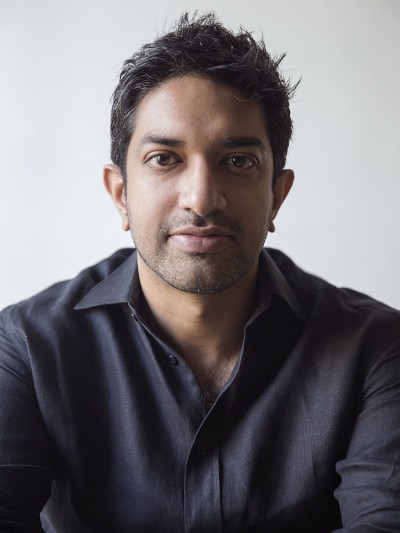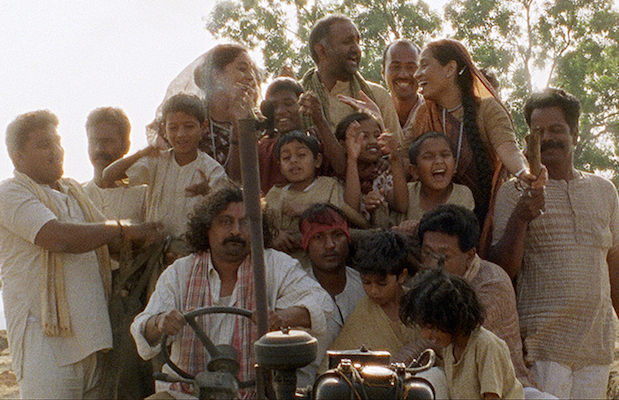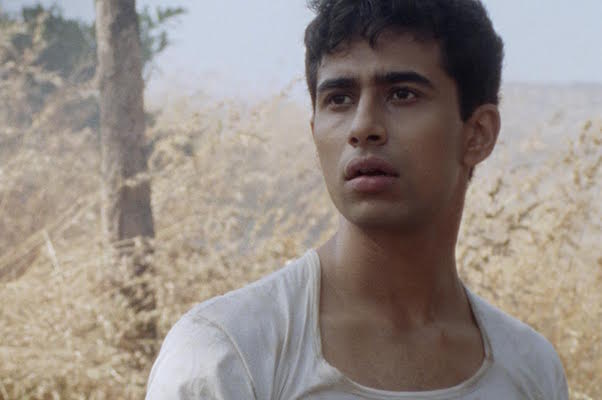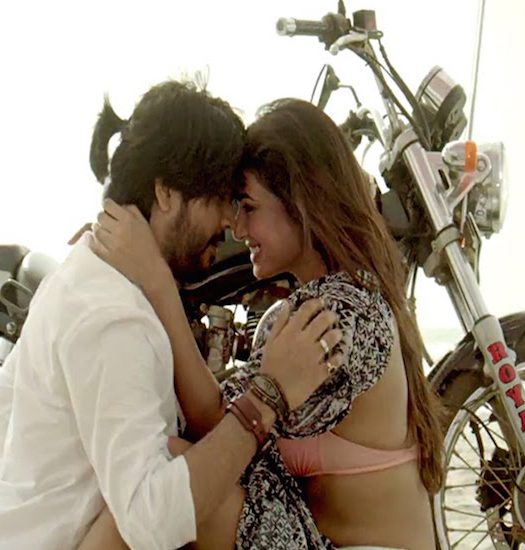Umrika will speak to audiences irrespective of nationality – Prashant
Prashant Nair’s first film Delhi in a Day won him much critical acclaim. His second feature Umrika views the idea of America through the eyes of a remote village and also touches upon the issue of illegal immigration. Umrika that won the Audience Award in the World Cinema Dramatic category at the Sundance Film Festival along with winning the FIPRESCI award at Cairo International Film Festival is all set to screen at the Indian Film Festival of Los Angeles (IFFLA) that starts from April 6. In an exclusive chat with Pandolin, Nair gets candid about his film and his journey as a filmmaker.

Filmmaker Prashant Nair
Does Umrika aim to breaking the stereotypes, assumptions and misunderstandings by ultimately giving some kind of a message?
In the film, a remote village begins receiving letters with images of America and they have to piece together their own idea of what America is like. So in that sense, the films deals with the ease with which we employ stereotypes, the things we label as exotic and the way we tend to project our own impressions on places we have never been to. There isn’t a specific message as such but it certainly explores such themes.
READ: INDIAN FILM FESTIVALS OF LOS ANGELES ANNOUNCES 2016 DISTINGUISHED JURY MEMBERS
Tell us more about the casting criteria and how did you zero in on actors like Suraj Sharma, Tony Revolori, Pratiek Babbar, Adil Hussain and Smita Tambhe.
I was introduced to Suraj Sharma by our producer, Swati Shetty. We had a brief first meeting and I was really impressed with the questions he had about the character and his journey. The script was at an early stage so our conversations were much more about theme and the eventual ambitions of the film but he had such great thoughts and questions that I really felt he had understood the deeper journey that Rama makes. That first meeting convinced me that he was the Rama the film needed.
Adil is someone whose work I’ve always loved and he’s such a warm and thoughtful person that I jumped at the chance to work with him. Smita just blew me away with her past work, positive energy and her talent. She’s a true force to be reckoned with and one of the most talented actresses working in India today. Every time we screen the film, people are always so moved by the way she has brought the mother’s character to life.
And Tony was sort of a happy accident. I saw the trailer for Grand Budapest Hotel and I thought that he was Indian. I reached out to his manager and it turned out that he wasn’t. But anyone who has seen him as Zero Moustafa would probably understand how it was really difficult to get him out of my head. I just couldn’t see anyone else in the role so I sent him the script and he loved it and we both decided to undertake this crazy challenge together. He had already spent months in a similar context as, originally, Zero Moustafa was to be played with a real accent and all. He put in a lot of hard work and had many long hours of dialogue coaching.
Prateik seemed to be a really interesting choice to play the elder brother from the start. It’s a character that is shrouded in a lot of mystery and we see him in the beginning and then in the end, but he is present throughout the movie. We did a few screen tests and Prateik really somehow managed to capture the essence of the character on screen.
Umrika became the only Indian film to ever win an award at the Sundance Film Festival. What would you attribute this win to?
Well, I think the subject and the storytelling resonated with the audiences – not only because the film is called ‘Umrika’ – I think they just managed to relate to the characters and themes and the journey. It’s also a film that mixes humor and emotion in a way that we’ve been told is more accessible than most festival films. In the end, we were really grateful to have Sundance as a launching pad for our film, the rest was really just an unexpected bonus.
READ: WAITING IS BASED ON A PERSONAL EXPERIENCE – ANU MENON
What role did the feedback from the Sundance Lab play in the making of Umrika?
The film went through the first year of the India screenwriting lab, along with Margarita with a Straw, Sonali Cable and several other beautiful scripts, which I hope will soon become movies. The term ‘screenwriting lab’ is misleading – it’s much more than that – the Sundance and Mumbai Mantra teams were always available to advise us during both the writing and the editing phases, assist us with industry and business-related challenges and then, most importantly, always be there to make us feel like we belong to a community and aren’t out there on our own in a vacuum trying to do the impossible. I would recommend anyone with a script to apply to the lab; it’s really a beautiful experience that can change your approach to writing and filmmaking.

Still from Umrika
The film also went through its share of financial struggles. What really kept you going?
I think we almost gave up many times. Every day was like the last day that we had money to shoot and that makes it very difficult for everyone involved to stay focused and keep it together. I’m sometimes surprised that we managed to make a film despite all those obstacles and the credit for that is due to two people: Swati Shetty for believing in the film and holding it together through an impossibly difficult production without money and Manish Mundra who finally was the only person to believe in us and the film and make it possible.
Born in Chandigarh, raised in Europe, Africa and Asia and having worked in New York, Paris, Prague, Berlin and Mumbai, it seems that you’ve never had any connection with rural India. How did you manage to show the world (1975 to 1986) that you were never really part of?
As a child and teenager we’d come back to India every second summer for three months. It was only as an adult that I stopped coming to India up until a few years ago so, ironically, the India I know best is the India of the eighties – that is where all my memories are from. I was lucky to be able to recreate that on film and it really allowed me to revisit those times in my childhood.
With regards to rural India, I was able to travel and spend a fair time doing research. But also, I had a team that was really familiar with the context and that I could rely on. Rakesh Yadav, the production designer, grew up in a village and was really key in helping me through the process. We had two dialogue coaches who were so much more than dialogue coaches – Dhirendra Dwivedi and Rahul Shankalya. They are both from MP and were with me throughout.
READ: MOCHI IS AN EVOLUTION OF MY OBSERVATION – SAQIB PANDOR
What made you fictionalize a village in the Madhya Pradesh region and no other part of the country?
Well, we wanted the village to feel remote, even for mainstream Hindi cinema audiences. So our first choice was a location that was up in the mountains and very hard to get to, somewhere where time would almost stand still. We picked the Satpura mountain range and decided to situate our fictional village there – also because it’s a very diverse region and things are very different from just one village to the next.
As I mentioned before, I had two dialogue coaches who were with me from pre-production throughout post-production who are both Bundeli speakers and come from that area so this was also a factor.
Was most of the crew desi? Did you also shoot with an international crew?
The majority were desis. Our costume designer, production designer, sound mixer, the entire AD and production departments were Indian, as was the cast. Our DOP and editors were from Austria and Germany respectively and sound post production was done in Berlin and Mumbai with a mixture of Indian and German teams. But everyone came and spent several months in India and really embraced our ways of working. Our sound designer, Christian Conrad, loved India so much that he has even been given an Indian name: Krishnan Karnad.
All the financing, both the producers are Indian. This film is a 100% Indian production. But we were also very clear: we wanted it to be accessible internationally. We tested it with audiences in Germany, the US, India and we did our best to ensure that it would speak to audiences regardless of nationality.

Still from Umrika
You have been exposed to different parts of the world. How has this impacted your journey as a filmmaker?
I think it profoundly influences the subjects that I want to tackle and the angle with which I approach material. For example, I am more interested in the things that connect us across cultures, nationalities, languages, religion than capturing the minute specifics of a very particular milieu. Thematically, I enjoy stories that are about the things that bind us together as humans and the different ways societies interact with each other.
Even though I very much enjoy movies that succeed at attempting to document a place or a time with such a high degree of authenticity and detail, I think for me that would be difficult – I sort of come from everywhere and nowhere. I’ve always loved magical realism and, as a child used to actively search out writers from different parts of the world and I suppose all that too, in some weird way, is a product of constantly moving around the world as a child.
READ: NONE OF FILMS ARE FOR THE SQUEAMISH – Q
Tell us about your transition from an electrical engineer to setting up a social media agency and now making cinema.
I chose to learn by doing. And I think that’s the best way – you make as much as you can and you learn your lessons from sharing that work and the process of bringing it about. Through making my first film Delhi In A Day, I learnt a lot about what I needed to learn more about. And with Umrika there’s a new set of things I want to focus on and hopefully it will be the same with every film.
I chose not to go to film school or to be an assistant director. I read a lot, watched a lot of movies and tried to make as much stuff as possible. While you may not be thrilled with the initial results, it is rewarding to feel yourself improving with each thing you do.
With no formal training in filmmaking, are things as easy as the result really sounds?
Not at all and I honestly consider myself to be in the very early parts of my journey as a filmmaker. Every day I learn new things and I feel like I’m growing quickly, simply because there is still so much to learn. That’s really exciting for me and it’s brought into my life a new passion and energy that I feel very blessed to have at this age, when so many around me are jaded or tired. I feel like a kid in a candy store.
It is obviously very daunting to make a career change at that age and it can also be very frustrating to start again from scratch, especially if you have left behind a successful career. But ultimately, we must follow our passions and, despite the ups and downs and the challenges, I don’t regret it.
There are filmmakers who make incredible films at the age of twenty so I think it is less about training or experience and more about being in the right space ‘creatively’ and being passionate and honest about your work. When you are older, sometimes you need to unlearn things you’ve learnt to get to that same space that might be easier in your early twenties. On the other hand, you have other skills which serve you well. So it’s really a unique journey for each person.
It can be a strange industry, with many distractions, contradictions and not always the most “noble” thoughts, but if you focus on the work and really try to tell stories the best way you can and grow as a storyteller, I think the universe has a way of taking care of the rest.
READ: PRODUCING AN INDIE FILM – STEP BY STEP GUIDE
Where next would you like to venture?
I would like to do something in English (my first language) and set outside of India for my next film. At the moment, I’m reading scripts and exploring a few options as well as writing my own material. But I’m also allowing myself the time to make those decisions carefully and explore material and ideas in a different rhythm from the past and with less pressure to commit and more space to experiment.



